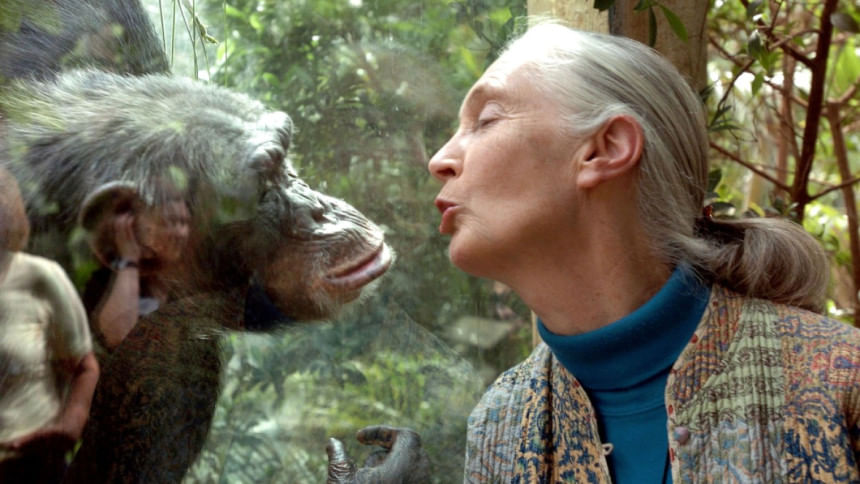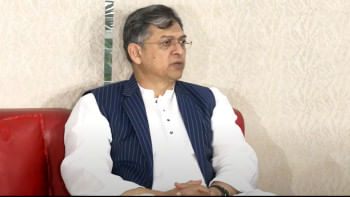Renowned primatologist Jane Goodall dies at 91

Scientist and global activist Jane Goodall, who turned a childhood love of primates into a lifelong mission to protect the environment, died yesterday, the Jane Goodall Institute said.
She died of natural causes at 91, it said in a social media post.
"Dr Goodall's discoveries as an ethologist revolutionised science, and she was a tireless advocate for the protection and restoration of our natural world."
The primatologist-turned-conservationist carried her love of wildlife from a seaside English village to Africa and then across the globe, seeking to understand chimpanzees and the role humans play in safeguarding their habitat and the planet's health.
Goodall was a pioneer, both as a female scientist in the 1960s and for her work on primate behaviour. She cleared the way for other women, including the late Dian Fossey.
She also drew the public into the wild, partnering with the National Geographic Society to bring her beloved chimps into homes through film, TV, and magazines.
She defied scientific norms, giving chimpanzees names instead of numbers, observing their personalities, and noting their family bonds and emotions. She also found they, like humans, used tools.
"We have found that after all, there isn't a sharp line dividing humans from the rest of the animal kingdom," she said in a 2002 TED Talk.
As her career evolved, she shifted from primatology to climate advocacy after witnessing habitat devastation, urging the world to act quickly on climate change.
"We're forgetting that we're part of the natural world," she told CNN in 2020. "There's still a window of time."
In 2003, she was appointed Dame of the British Empire and, in 2025, received the US Presidential Medal of Freedom.
Born in London in 1934 and raised in Bournemouth, Goodall long dreamed of living among wild animals. Her passion, fuelled by a stuffed toy gorilla from her father, grew as she devoured books such as "Tarzan" and "Dr Dolittle."
She set aside those dreams after leaving school, unable to afford university. She worked as a secretary and later in a film company until a friend's invitation to Kenya brought the jungle within reach.
After saving for the journey, she arrived in Kenya by boat in 1957. There, an encounter with anthropologist Louis Leakey and his wife Mary set her on course to work with primates.
Under Leakey, she established the Gombe Stream Chimpanzee Reserve, later renamed the Gombe Stream Research Centre, near Lake Tanganyika in present-day Tanzania. There she discovered chimpanzees ate meat, fought wars, and fashioned tools to eat termites.
"Now we must redefine tool, redefine man, or accept chimpanzees as humans," Leakey said of the finding.
Although she later paused her research to earn a PhD at Cambridge University, Goodall stayed in the jungle for years. Her first husband and frequent collaborator was wildlife cameraman Hugo van Lawick.
Through National Geographic's coverage, the chimpanzees at Gombe became household names -- most famously David Greybeard, with his silver streak of hair.
Nearly 30 years after first arriving in Africa, Goodall said she realised she could not protect chimpanzees without tackling the loss of their habitat. She knew she had to leave Gombe and take up a wider global role.
In 1977, she founded the Jane Goodall Institute, a nonprofit supporting Gombe research as well as conservation and development efforts across Africa. Its work has since expanded worldwide, including environmental education, health and advocacy.
She made a new name for herself, travelling an average of 300 days a year to meet officials and speak with communities and schools. She continued her tours into her 90s.
She later launched Roots & Shoots, a conservation programme for children.
It was a stark change from her solitary research, spending long days watching chimpanzees.
"It never ceases to amaze me that there's this person who travels around and does all these things," she told the New York Times in 2014 during a trip to Burundi and back to Gombe. "And it's me. It doesn't seem like me at all."
A prolific author, she wrote more than 30 books, including her 1999 bestseller "Reason for Hope: A Spiritual Journey," and several children's titles.
Goodall said she never doubted the planet's resilience or humanity's ability to overcome environmental challenges.
"Yes, there is hope ... It's in our hands; it's in your hands and my hands and those of our children. It's really up to us," she said in 2002, urging people to "leave the lightest possible ecological footprints."
She had one son, known as Grub, with van Lawick, whom she divorced in 1974. Van Lawick died in 2002.
In 1975, she married Derek Bryceson. He died in 1980.

 For all latest news, follow The Daily Star's Google News channel.
For all latest news, follow The Daily Star's Google News channel. 



Comments